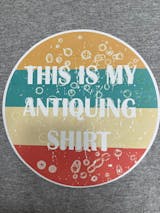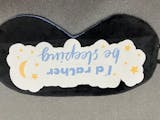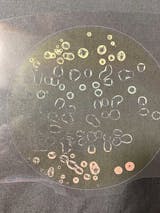Updated By TeckWrap Craft On 10, January, 2025

A heat press machine is an important tool that every crafter should have if they are planning to design fabrics with HTV. You can use a heat press with vinyl by preheating it to the recommended temperature setting. Lay the fabric flat, place the design on it, and apply heat and pressure for the specified time. In this blog, we have presented a detailed explanation of the process so you can create professional-grade garments.
What Is A Heat Press Machine?
A heat press is a high-utility machine that applies heat and pressure to transfer designs, images, or text onto clothing for a preset time period. It has a metal stamping tool that includes an upper platen and a die (a metal frame that holds the design). T-shirts are one of the most common items that are designed with a heat press, but you can also print on hats, bags, and other textiles with it.
Using a heat press to transfer patterns, logos, or lettering to T-shirts is easy and inexpensive. You just have to set the temperature and apply pressure for the recommended time to apply the print. Here’s why you should choose a high-quality heat press for your t-shirt business:
-
It Is Durable: Once bought, the heat press gives high performance for a long time. Regular maintenance will extend the machine’s usability.
-
It Is Affordable: The cost of this machine is economical and it can be easily bought by individuals and businesses.
-
It Is Convenient To Use: A heat press is easy to use allowing you to design high-quality T-shirts quickly with very few steps involved.
-
It Is Available In Different Types: There are different models and shapes of heat press machines available such as clamshell, draw, and swing away. You can buy the one that best suits your T-shirt printing business.

What Is Heat Transfer Vinyl?
Heat transfer vinyl (HTV) is a vinyl polymer material that is used to transfer designs to compatible fabrics. It has a heat-activated adhesive that requires specific temperature and pressure to develop a robust bond with the garment. These are applied for the recommended duration using a heat press machine. HTV is available in many different colors and finishes allowing you to express endless creativity.
How To Use A Heat Press With HTV?
It is very easy to use a heat press machine with HTV. Following is the step-by-step process for designing a fabric with this vinyl. For best results and long-lasting performance, use cotton, polyester, and cotton blends.
-
Step 1: Prepare Your Fabric: When using cotton, it is best to wash the fabric to remove the risk of shrinking and let it dry completely. Press it afterward to get rid of any remaining moisture.
-
Step 2: Finalize Your HTV Design: On the software that works with your cutting machine, set the dimensions of your design, select the material, and flip it horizontally (mirror it).
-
Step 3: Cut And Weed The Design: Allow your automated machine to cut the design then remove excess vinyl using a weeding tool.
-
Step 4: Preheat The Heat Press: Set the temperature of your heat press according to the type of HTV you are using and let it get heated.
-
Step 5: Apply The HTV Design: Place your fabric on a sturdy flat surface. Make sure it has no creases. Place your HTV design where you want it to be on the garment and put parchment paper on top. Set the pressure of the heat press and apply and apply heat for the time mentioned.
-
Step 6: Remove The Heat Press: When the time is up, remove the heat press and let your fabric cool down. Gently peel off the carrier sheet at an angle. You have successfully used a heat press to transfer the vinyl design to the fabric of your choice.

Heat Press Settings For Heat Transfer Vinyl
It is important to take care of the following settings to achieve professional application of an HTV pattern:
-
Set The Time: This is easy to do. Most machines have a digital time display that you can adjust by pressing the up or down arrow keys. If yours has more of a traditional dial, you can turn it to get your desired time settings. Modern machines also have an automatic shut-off function after the time is up. The timer always appears on the right side.
-
Set The Temperature: This can also be done using the arrow keypad depending on the type of heat press you have. In new models, you can input the desired number.
-
Heat Press Time And Temperature Guide: It is important to have the right temperature, pressure, and time settings on your heat press machine when designing with vinyl. For standard HTV films, the recommended temperature is from 135℃ (275℉) to 150℃ (300℉). The pressure should be medium to be applied for 8-12 seconds. Allow the design to cool down before removing the carrier sheet.

What Surfaces Or Materials Can You Use HTV On?
You can use HTV on fabrics made with polyester or cotton, or a mix of both. You cannot apply your vinyl design on synthetic fabrics like acrylic or nylon as it will melt due to high heat. You can also use heat transfer vinyl on a variety of other materials like canvas, leather, mugs, linoleum, and ceramic. Here are some projects you can design with HTV and a heat press:
- You can create amazing wooden signs using HTV. The vinyl looks great on wood and gives a painted effect. You can even place your sign outdoors as HTV resists fading and peeling especially if you have coated it with a protective laminate.
- You can custom-design your leather wallet, keychain, and belt using HTV.
- Personalize your canvas bag and shoes using this vinyl.
- You can design banners made with HTV-compatible fabrics. Advertise your business through these.
- If you love to swim, you can customize your swim cap to represent your team or simply print your initials on it.
- Use HTV to design soft home decor. Add life to throw pillows, curtains, bedsheets, chair covers, table mats, tea towels, and so on.

Frequently Asked Questions
Q. Can you heat press directly on vinyl?
No, you should not heat press directly on vinyl as it may damage the material. Always use a protective barrier, such as a Teflon sheet, parchment paper, or butcher paper, to shield the vinyl from direct heat. This ensures even heat distribution and prevents sticking or melting during the pressing process.
Q. What type of vinyl does the heat press work with?
The heat press machine works with heat transfer vinyl. The different finishes of this vinyl require specific temperature and pressure settings for a successful project.
Q. How do I clean my heat press?
To clean your heat press machine, use a soft, microfiber cloth dampened with a mild cleaning solution. Gently wipe the platen in a circular motion. Do not scrub. You can also use mineral spirits for cleaning.
Q. Why is my vinyl sticking to my heat press?
Your vinyl is sticking to your heat press because it cannot endure the high heat. Use a Teflon sheet or parchment paper to cover your design. This will create a safe barrier between the HTV and the heat press platen, distributing heat evenly and the vinyl won’t stick.
Conclusion
A heat press is not a complicated machine to use with vinyl, but it can be confusing at first. It’s essential to familiarize yourself with its functions first and practice transferring designs before working on actual projects. Each machine comes with a beginner’s guide or booklet on how to get started. This article will help you get accustomed to your new heat press and give you all the information you need to use it without any problems.


















